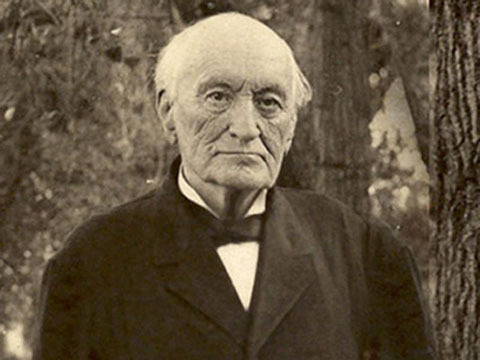GENERAL DESCRIPTION
The Church of the Nazarene is an international denomination of 2.5 million members, about one-fourth of whom live in the United States. The largest of the churches that originated out of the American holiness revival of the 19th century, it was organized in 1908 through the merger of three regional holiness bodies. It is Wesleyan in doctrine and related theologically to the Free Methodists, the Wesleyans, the Salvation Army, and traditionalist sectors of the United Methodist Church.
FOUNDERS
Key leaders in the 1908 merger were Phineas F. Bresee, co-founder in 1895 of a Pacific Coast-based church also known as the Church of the Nazarene; Hiram F. Reynolds, missionary secretary of the Northeastern-based Association of Pentecostal Churches of America (organized 1896 from antecedents dating from 1890 and 1895); and Charles B. Jernigan and Mary Lee Cagle of the Holiness Church of Christ, a Southern denomination (organized 1904 from antecedents dating from 1894 and 1901). All four were ordained ministers and had backgrounds in Methodism. Bresee and Reynolds were elected general superintendents of the new denomination. Bresee’s unique contribution was to shape the church’s frame of government, while Reynolds stamped it with a strong missionary emphasis.
Other key leaders include Roy T. Williams and James Blame Chapman, second generation leaders of the Board of General Superintendents. Benjamin F. Haynes was founding editor of the church paper Herald of Holiness. Aaron Merritt Hills (Fundamental Christian Theolog)’, 2 vols., 1931) and H. Orton Wiley (Christian Theology, 3 vols, 1941-43) were significant leaders in shaping early theological development.
DOCTRINES
The Church of the Nazarene is an orthodox Protestant body that adheres to the ecumenical creeds of the early Christian church. The theology of Methodist founder John Wesley (1703-91), who integrated the Protestant understanding of grace with the Catholic themes of holiness and love, is foundational for Nazarene doctrine. Nazarenes emphasize Christian conversion, sanctification or holiness, and the personal assurance of God’s grace – Wesleyan distinctives that point back to a deeper rootage in continental European pietism. Discipleship is a prominent concern. An emphasis on the doctrine of the Holy Spirit has generally prevented Nazarenes from slipping into the static Biblicism that sometimes affects other evangelical Protestants. The Church of the Nazarene recognizes two sacraments: Christian baptism and Holy Communion. Believers’ baptism and infant baptism are both allowed, though the former is most generally practiced.
ORGANIZATION
Nazarene polity is a studied compromise between Episcopal and Congregational forms of government. While Nazarenes consider the congregation to be the basic unit of the church, the highest legislative body is the General Assembly, which usually meets every four years.
The General Assembly:
- Elects the general superintendents, who serve until the next assembly when they may be re-elected;
- Elects a General Board which meets annually and is composed of representatives of the General Assembly; and
- Decides denominational issues, many of which are incorporated into the church Manual.
Congregations belong to districts, which hold annual assemblies and are led by elected district superintendents. Congregations call their own pastors subject to the approval of the district superintendent. New ministers are elected to orders by the district assembly and ordained by the presiding general superintendent.
CONTRIBUTIONS AND INFLUENCE
As a religious body that originated on American soil, the Church of the Nazarene has reflected the democratic spirit throughout its history. This facet has been exemplary in two areas: clergy-laity relations, and the role of women in church life. Beginning in the parent-bodies and continuing in the present denomination, all levels of church government from the congregation through the General Assembly have balanced lay and clergy representation. Moreover, all councils of church government, and all offices of the church whether clergy or lay, have been open to women. The Southern parent-group ordained its first women in 1899, and the other two groups both did so in 1902. After the 1908 merger, nearly 14 % of the ordained clergy (and 18% of all ministers and evangelists) in the church was female.
Outside the denominational line, Nazarenes have been active as well. Nazarene colleges have educated a number of leaders in the field of relief work, including the founders of World Vision and World Neighbors, and past presidents and executive directors of the American Red Cross, Church World Service, and Compassion International. Nazarene leaders have been active in the National Association of Evangelicals, the Christian Holiness Association, and the Lausanne Committee on World Evangelization.
SIGNIFICANT TERMS:
CONVERSION -- Nazarenes emphasize conversion as a definite experience that initiates the life of Christian discipleship.
SANCTIFICATION -- The process of becoming holy, or Christlike, which Nazarenes equate with the infilling of divine love through the presence of the Holy Spirit.
Nazarenes believe that this process begins at conversion and that a point can be reached, called entire sanctification, when divine love expels all disposition to sin.
BIBLIOGRAPHY
Greathouse, William M., What is the Church of the Nazarene? Nazarene Publishing House, 1973; rev. ed. 1984.
Jones, Charles Edwin., Perfectionist Persuasion. The Scarecrow Press, Inc., 1974.
Manual of the Church of the Nazarene, 2013.
Smith, Timothy L., Called Unto Holiness: The Story of the Nazarenes. Nazarene Publishing House, 1961.

